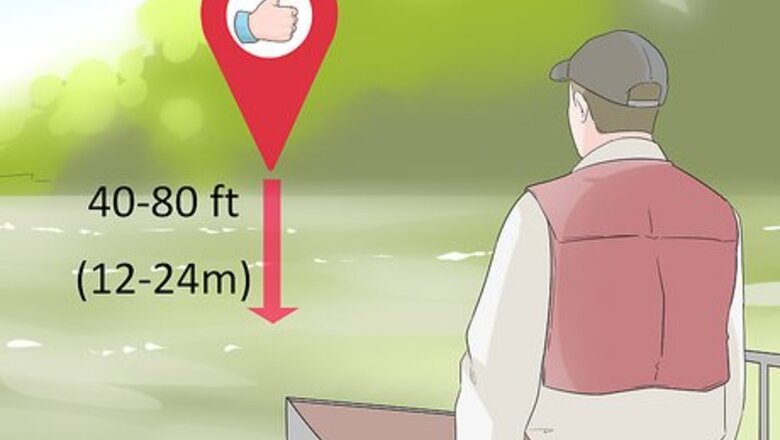
views
Locating and Luring Halibut
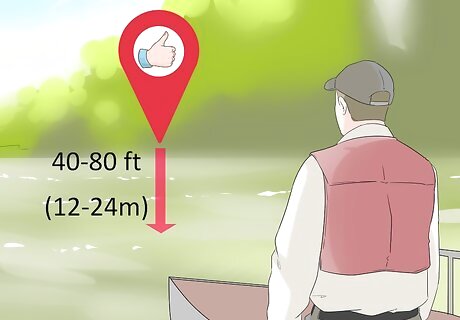
Scout your location. Halibut prefer to remain near the bottom of the ocean, usually at depths of around 40–80 feet (12–24 m); rarely will they be found below 120 feet (36.6 m) (36 m). They also prefer to hang out in “hydraulic relief zones” — current-calming obstructions like depressions, valleys, rock formations, and the like at the bottom of the sea. You can utilize sonar and other electronic equipment to map out the depths and contours of the ocean below and identify good fishing spots. It never hurts to pair this with firsthand advice on prime fishing spots from successful halibut anglers, of course. Polaroid glasses are also a big help—those allow you to see into the water and figure out what's really around.
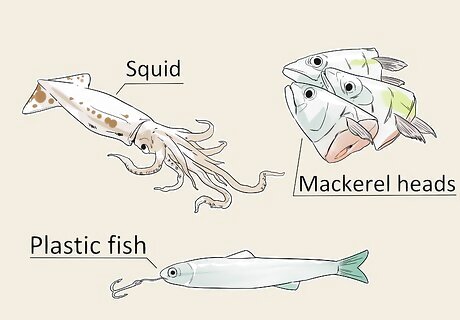
Choose bait that attracts halibut. Experts on catching halibut often advise the use of bait such as live squid or octopus, or mackerel heads or guts. Artificial bait such as plastic fish colored like a sardine or anchovy can also be used in halibut fishing. Add attracting scents to your bait and line as well, and chum liberally and regularly to lure halibut in. Luminescence and movement help draw halibut in, although jerking movements of the bait can have the opposite effect.
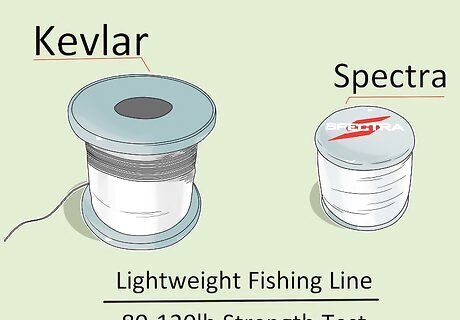
Choose a strong but lightweight fishing line. The size and strength of halibut mean that they can snap weak or low-quality lines. At the same time, though, lines that are too heavy-duty or offer too much stretch may make the reeling process too difficult. Aim for a low stretch, high quality Kevlar or Spectra line at 80 - 120 pound test strength. Use a light fishing line to prevent you from tiring too quickly when you reel the halibut in. A California halibut can weigh around 50 lbs. (23 kg), while a Pacific halibut can be over 500 lbs. (230 kg).
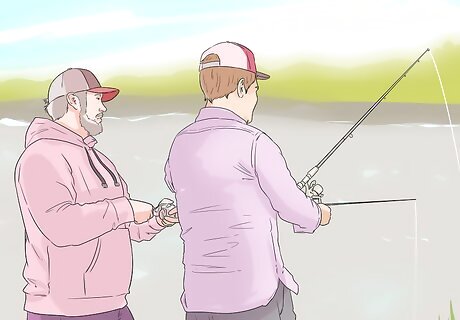
Fish with several other people. It’s always nice to have some company while fishing, right? Also, this puts more bait in the water to draw fish. Yes, this also means more competition for your prize, but adding more chum and bait to your fishing area will still improve your odds of catching a halibut. If going halibut fishing alone or with a few people, create your own chum slick to draw fish to your boat.
Hooking and Reeling Them In
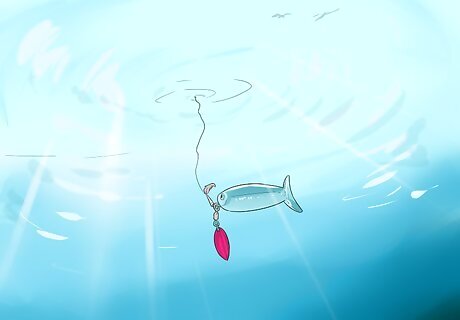
Drop your bait close to the bottom of the sea floor. This is where halibut typically spend their time. Once you hit bottom, reel back a bit so you are just off the floor. Wait for around thirty seconds for a bite before moving the bait again. Raise and lower the bait a few feet (meters) or gently move it from side to side in the water to help attract the fish to your line.
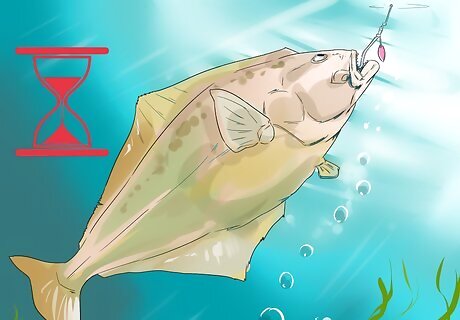
Wait for a halibut to take the bait. If, after about a dozen casts, you haven’t had a bite, you may want to consider repositioning. Try exploring one of your other target spots. Once you do get a bite, fight your instinct to set the hook by pulling — a powerful halibut is likely to slip free this way. Instead, allow your fishing line to lower back into the water until it goes tight.
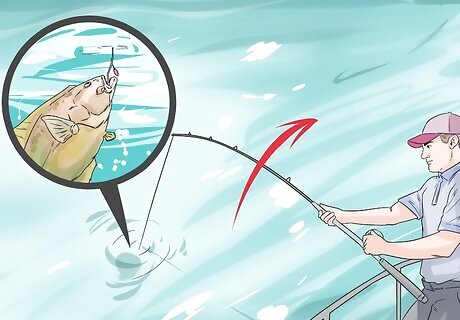
Set your hook and steadily pull the line up with control. Wind and lower your fishing rod and then pull again, bringing the halibut up close to the water's surface. Take your time and go easy. Halibut will often come to the surface without much resistance if a gentle touch is applied. Keep going until the fish is just below the water’s surface.
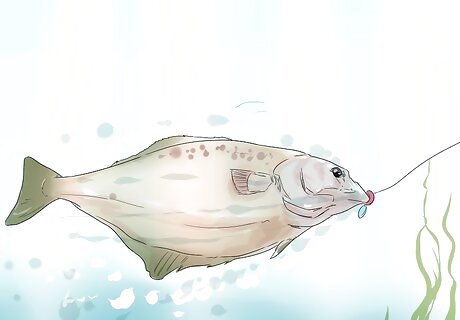
Allow a “spooked” halibut to run free for a bit. Don’t try to fight it or pull it closer, or you will likely lose your hook or break your line. Instead, give it some slack and wait for it to calm back down. Then, try slowly but surely bringing it up again. Remember, this magnificent fish is worth the extra time.
Claiming Your Prize
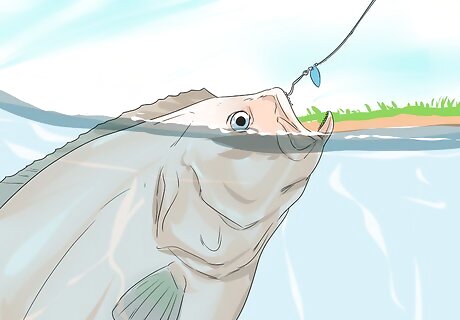
Keep at least the halibut's head underwater. You need to weaken this powerful fish before bringing it aboard. Flailing halibut have been known to seriously injure unsuspecting anglers. Make sure your prize is unable to put up resistance before putting it on your boat. Use a gaff or harpoon to wound the fish. Aim for the solid area just behind the head, and drive the gaff or harpoon straight through. Wait for the fish to grow tired and lose some blood. Some people use guns to wound halibut. However, this is illegal in some areas; you risk ruining some of the best meat on the fish (the cheeks); and it’s simply a more dangerous practice than is necessary.
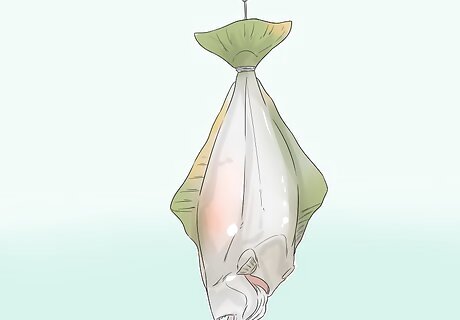
Raise the wounded halibut alongside the boat. Tie it up (“hog tie” style) and cut its gill rakers with a knife. Bleeding the fish further will kill it and provide cleaner meat later. Stay on your guard until you know the fish is dead — even when it’s on death’s door, a halibut can still injure you. Put the dead halibut on ice as soon as possible.
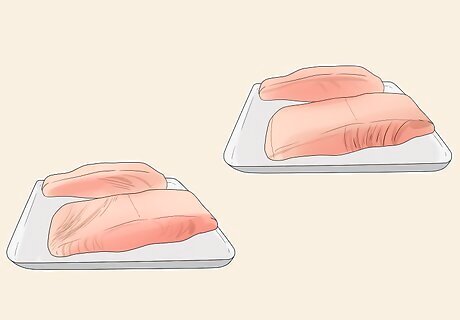
Prepare the fish for eating or storage by filleting it. This works better for halibut meat than trying to cut it into steaks. Remove the skin for short-term storage, as it can affect the flavor of the meat. However, if you intend to freeze the fillets for longer than a couple months, you may want to keep the skin on and rinse the meat down with salted water. Then vacuum seal it and freeze it.


















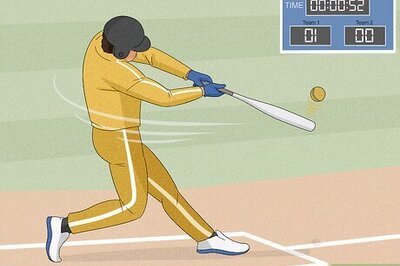
Comments
0 comment